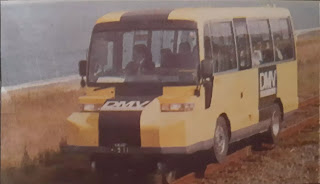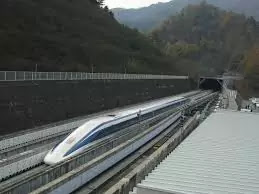What is Compact car?
Aiming
for the sweet spot between the comfort of a personal vehicle and therefore the efficiency of public transportation, the town Car from MIT’s may be a stackable electric which will be verified sort
of a luggage cart at the airport, then returned to any station round the city.
Electric motors in each
wheel eliminate the necessity for a mechanical drive train, and these 5-ft long (1.5
m) two seaters zip along at 55 m.p.h. (about 90 km/h).
Air travel (How the vehicles flying in the sky were discovered)
Robobike
He’s a scrappy guy, weighing in at
just 11 lbs. and standing
only 20 in tall but, Murata Boy does something that no other robot can: ride a motorcycle . Thanks to gyro sensors in his body and a camera in his head, not only
can he keep himself upright, but he also can peer ahead to form sure he rides in a straight line. into walls, and wireless
technology allows him to speak with a PC for navigating complex routes. And if
the road gets bumby, a shock sensor detects the vibration so that he can
stabilize his body and stay on the seat.
Indian bullock Cart
Carts are mentioned in
literature as far back because the second millennium B.C.
The Indian sacred book
Rigveda states that men and ladies are as equal as two wheels of a cart. Hand-carts pushed by humans are used round the world. in the 19th century, as an example , some Mormons travelling across the plains of the us between 1856 and
1860 used handcarts. Carts were often used for judi cial
punishments, both to transport the condemned-a public humiliation in itself.
Michael Dell (Founder of Dell Computers)
High speed rails
On 27 September, 1981, after almost 15
years’ research and development, the first TGV pulled out of the Gare du Lyon
in Paris and Sped off to the city of Lyon. Travelling at around 380 Kilometers
(237 miles) per hour, it reached its destination in 2 hours 40 minutes, cutting
the regular journey time in half the train is driven by electricity and has
streamlined, bullet-like profile, with engines at both ends. It can run at
super speeds on its own specially designated high-speed track.
Magnet train (Magnet train Japan)
Train passengers in Japan can look
forward to a new kind of railway. Using the repellent forces of superconductive
magnets (SCMs), maglev (magnetic levitation) lifts the train carriages about 10
centimeters (four inches) above the guide way that replaces conventional steel
track. A magnetic linear induction motor (LIM) pushes the train forwards. And
travelling by magnet began.
Diesel trains take to the tracks in Germany and Switzerland
The first diesel locomotives are now
being built in Germany and Switzerland. Sulzer – the manufacturer in
Switzerland-is producing diesel locomotives that weight 77 metric tons (85
tons), with a horsepower of 1200. The diesel engine is more powerful than the
petrol engines used in electric trains and is based on the engine patented by
German engineer Rudolph Diesel in 1892.
Steam powered car (First car)
American, Sylvester Howard Roper
(1823-1896) invented a two-cylinder, steam-engine motorcycle (powered by coal)
in 1867. This can be considered the first motorcycle, if you allow you
description of a motorcycle to include a steam engine. Howard Roper also
invented a steam engine car.
German, Daimler invented the primary internal-combustion engine motorcycle in 1885,
which was an engine attached to a wooden bike. Nicolaus August Otto. invented the first
“Four-Stroke Internal-Combustion Engine” in 1876. He called it the “Otto Cycle Engine” As soon as he
completed his engine, Daimler (a former Otto employee) built it into a motorbike.
Crane
An
invention of ancient origin, Grus is
employed for the loading and unloading of heavy objects and as an aid within the construction of
tall buildings. It is distinct
in that it moves objects both horizontally and vertically. One common forerunner of Grus was the shaduf, prevalent in Egypt and India around 1500 B.C.
Employed by a single person for lifting water.
The first true cranes, founded on
principles governing the use of leavers and counterweights, employed a pulley
system.
Air technology vehicles (Eco friendly car)
 |
| Air technology vehicle |
French firm MDI signed a deal this
year with India’s largest automaker, Tata Motors, to start manufacturing
compressed-air-technology vehicles. These ultra-eco friendly cars run on air, and therefore the only thing they emit is colder, cleaner air. Another convenient feature: a
built-in compressor could even be plugged in to refill the tanks within minutes.
Rubber meets the rail
 |
| Rubber meets the rail |
DMV is really a pleasing acronym in some
parts of the world. JR Hokkaido
Railway Company began testing its Dual Mode vehicle recently on a picturesque
route along the Sea of Okhotsk in Japan’s largest prefecture.
Venture electric
The
Venturi electric runs solely on wind and solar energy. Solar cells blanket the rooftop,
and a turbine provides extra juice. When that’s not enough, a
backup electric outlet can recharge the three-seat electric in five hours.
How to keep them down on the farm
The international Harvester company
has introduced the Farmall tractor-set to become a boon for all farmers. Its
name describes its function, as it can do almost all the work needed to run a
farm-ploughing, planting, cultivating and harvesting. The front wheels are much
smaller than those at the back, and are set close together so that the tractor
can be driven between crops sown in rows. Its small wheels also make it much
more manoeuvrable and allow the driver make sharper, tighter turns. It is the
first all-purpose tractor and is high enough.
Early autos
The first petrol-powered automobile
was made in 1885 by German engineer Kari Benz, who developed his own version of
the petrol engine and used it to power a three-wheeled carriage. However, the
prototype of today’s car was developed in France by Rene Pan hard and Emile
Lavassor in 1891, when they mounted a Gottlieb Daimler petrol engine in the
front of their vehicle. Until
1898, when Louis Renault invented the drive shaft, engine power was transferred
to the drive wheels via a sequence , as on bicycles.
Detroit’s for better interiors
Finally Detroit is figuring out what
Japanese and European automakers have known for years: Inner beauty is the path
to success. For too long US auto makers kept costs down by focusing more on
what was under the hood than on what was under the roof. They believed if their
typical buyer had to chose between horsepower and design aesthetics, the ponies
would always win. The
resulting interior of the typical American car was a bland expanse of poorly fitting, inferiority plastic and cheap chrome. But after years, now
U.S. car makers are beginning to get it right.
Types of database management system (Types of dbms)
MHD ship
Japan has begun sea trials of a
prototype magnetic ship. Yamoto 1 is propelled by two MHD (magnetohydrodynamic
) thrusters that run without any moving parts. When completed, the MHD shp
should be able to attain speeds of more than 200 kilometers (125 miles per hour
or 100 knots), with little noise. This is several times the top speed of today’s
ship, which are slowed down by turbulence created by the ship’s propellers. MHD
works by applying a magnetic field to and electrically conducting fluid. The electrically conducting fluid utilized in the MHD thruster of the Yamoto 1 is seawater.
Edwin L. Drake
 |
| Edwin L. Drake |
Born : 29 March 1819
Father of the
Modern Petroleum Industry
- Edwin
Laurent Drake (1819-1880),also
brought up as Colonet Drake, was an American oil driller, is popularly credited with beingthe primary to drill for oil. He was born in Greenville, New York and grew up in Castleton. - On August 27, 1859, a well that Drake
drilled near Titusville, Pennsylvania struck oil. While petroleum oil was known
before this, there was no appreciablemarketplace for it. Yet, studies of crude oil showed it to be good source of kerosene if enough could be obtained. Drake’s employers were seeknign enough crude oil to establish a new enterprise, providing kerosene for lamps. The oil well was not Drake’s idea, but rather that of his employer, George Bissell.
- Bissell sent Drake to the site in the spring of 1858. Drake, a native of Greene Country. New York, has spend his earlier life working as a clerk, an express agent, and a railway conductor on a brand new, sometimes dangerous conveyance, the railroad.
- Then, in the late 1850’s
Edwin Drake was hired by the Seneca Oil Company to investigate suspected oil
deposits in Titusville, Pennsylvania. The
company chose the retired railway man partly because he had free use of the rail. Drake decided thatthe simplest thanks to find oil was to dig for it.
- He used an old
external-combustion engine to power the drill. In 1857 and again in 1858 Drake searched for oil in and around Titusville. He had limited success, but this was not enough to make commercial yield sustainable. - After
initial difficulty locating
the required partsto create the well, which resulted in his well being nicknamed “Drake’s Folly,” Drake proved successful. Meanwhile crowds of people began to gather to jeer at the apparently unproductive operation. Drake was also running out of money.
- Amazingly the Seneca
company had abandoned their man and Drake had tobelieve friends to back the enterprise. On August 27th Drake had persevered and his drill bit had reached a total depth of 69.5 feet (21 m). - The next morning
Drake’s driller, Billy Smith, looked into
the opening in preparationfor an additional day’s work. - He was surprised and delighted
to ascertain petroleum rising up. Drake was summoned and the oil was brought to the surface with a hand pitcher pump. The oil was collected in a bath tub.
- Drake
found out a stock company to extract and market the oil. But, while his pioneering work led tothe expansion of anrefining industry that mademany of us fabulously rich, for Drake riches proved elusive.
- Drake did not possess good business acumen. He failed to patent his drilling invention. Then he lost all of his savings in oil speculation in 1863.
- He was
to end up as an impoverished old man. In 1873. Pennsylvania voted an annuity of $ 1500 to the “crazy
man” whose determination founded the
refining industry.




Post a Comment
Please do not enter any spam link in the comment box.